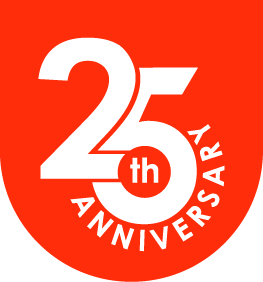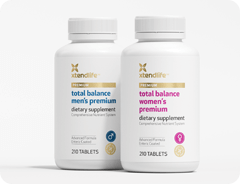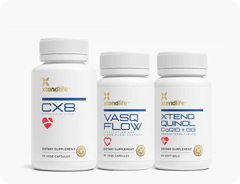As we watch our birthdays come and go, some of us accept the aging process gracefully, while others -after eating a congratulatory slice of cake, of course - have to be dragged, kicking and screaming, into another year, and usually won’t admit anything but being 29, 39 or 49 etc. (for the seventh year in a row).
While age is relative – you’re only as young as you feel, after all – your fitness age is a different story.
While your mind and spirit may not reflect your true age, your body does. And knowing how old you are physically could help you reverse some of the damage and see those fitness years drop away, potentially extending your life span.
Why does fitness matter?
While many of us think that eating a healthy diet can help prevent the onset of diseases, it is important that we add physical fitness to the mix.
With exercise, we can reduce the risk of cardiovascular conditions.
According to the American Heart Association, cardiovascular disease is the leading cause of death for both men and women in the United States, and can include heart attacks, hardening of the arteries, heart valve problems, heart failure and stroke.
Inactivity also elevates the risk of a host of other health problems, including high blood pressure, depression, obesity and some type of cancer.
Fitness age: A long love story
The concept of fitness age was developed by researchers at the Norwegian University of Science and Technology in Trondheim, who spent 24 years following 37,000 adults.
They originally based their calculations on the VO2max, which is a measurement of your body’s ability to not only take in, but also utilize oxygen. It essentially indicates cardiovascular endurance. (Ref. 1)
Interestingly enough, those who have the top VO2max scores – essentially those whose fitness ages are the youngest – are Norwegians. Cyclist Oskar Svendsen, cross-country skier Espen Harald Bjeke, cross-country skier Bjorn Daehlie and professional cyclist Kurt Asle Arvesen hold the top four worldwide scores, while American Greg LeMond, a Tour de France cyclist, holds the fifth place position. (Ref. 2)
It is widely held among the general population and even among health professionals that moderate exercise is a healthy practice but long term high intensity exercise is not. There is also a long-standing urban myth that Tour de France cyclists have a sub-60 year life expectancy. This could be true for those elite endurance athletes who regularly use performance enhancing drugs and substances. However, a recent study found that the age at which 50% of the general population died was 73.5 vs. 81.5 years in Tour de France participants. (Ref 7)
“A 70-year-old man or woman who has the peak oxygen uptake of a 20-year-old has a fitness age of 20,” said Dr. Ulrik Wisloff, senior author of the study, said in an interview with the New York Times. (Ref. 3)
But how is the average person going to calculate their VO2max score?
Without a trip to a specialized doctor, they’re not.
So to counteract that problem, Bjarne M. Nes and his colleagues devised a short question-and-answer test that would help them zero in on similar estimates of fitness, without the need for a lab setting.
The questions include:
- What is your age?
- What is your resting heart rate?
- How often do you exercise (on a five-point scale from never to almost every day)?
- How often do you push yourself (on a three-point scale from not at all to exhaustion)?
- How long do you exercise (on a four-point scale from less than 15 minutes to 60 minutes or more)? (Ref. 4)
To check yours, use this URL: http://www.ntnu.edu/cerg/vo2max

A prediction of lifespan?
So now that you know your fitness age, what can you do with it?
The study essentially turns the tables on aging, and instead of thinking of age as the years since birth, changes things up so we think of age as the years prior to death, which creates inspiration to work toward becoming younger through improved fitness levels.
According to researchers, the lower your fitness age is from your actual age, the more likely you’ll be to live a longer life. (Ref. 5)
It is, according to Wisloff, “the single best predictor of current and future health.” (Ref. 3)
And if the numbers aren’t looking good, you can ramp up your exercise routine and make changes, decreasing your fitness age over time and potentially adding years to your life.
Then, when you say you’re 29, again, your cake might not show it, but your body will.
Tips to lower your fitness age
While hiking, biking, running and swimming can all help lower your fitness age, strength training is a smart way to go, because it helps build muscles that elevate metabolism so you burn calories at a faster rate. (Ref. 6)
Some to try – and recommended by Australian trainer Michelle Bridges, author of the “12-Week Body Transformation Program,” include:
- Bicycle crunches. Instead of bringing both knees to meet both elbows, Bridges recommends this trickier crunch, in which you bring the left knee and right elbow together, then alternate right knee, left elbow. The move works a larger portion of the abdominal region including the waist.
- Plank. The plank is a fitness go-to, and it helps build your core, which is important in all forms of exercise. To do it, begin in a pushup position, then lower your forearms as support, along with your toes. Keep your body straight and elevated to build endurance in both the abs and back while improving balance skills.
- Step-Ups. This exercise mixes cardio and strength training, and focuses on some of the body’s biggest muscle groups. Using an aerobic stepper – or a stair on the back porch - and step up on one foot, raising the knee of the other leg as you do so. Reverse legs, and complete as many sets of 10 as you can.
- Dumbbell thrusts. Your triceps, back, shoulders and biceps are all engaged in this exercise, which allows you to choose free weights you’re comfortable with at the start, and raise your weight limit as your strength levels grow. To do it, step forward on your left foot while reaching out with a weight held vertically in your left hand. Pull it back toward your side and repeat 10 times, then switch to the right side. Do as many sets as you can before your muscles grow too tired to maintain proper form. Alternate upper and lower body work for the most effective results. (The rest in between helps muscles recover, so they’ll be stronger the next time you hit the gym).
References:
- http://well.blogs.nytimes.com/2014/10/15/whats-your-fitness-age/?_r=0
- http://www.topendsports.com/testing/records/vo2max.htm#
- http://www.medicaldaily.com/whats-your-fitness-age-calculator-uses-5-factors-determine-how-old-you-really-are-266297
- http://www.psychologytoday.com/blog/fulfillment-any-age/201410/do-you-know-your-fitness-age
- http://www.foxnews.com/health/2014/10/24/do-know-your-fitness-age-it-may-predict-how-long-youll-live/
- http://www.today.com/health/how-old-are-you-really-find-out-your-fitness-age-2D11850690
- http://www.ncbi.nlm.nih.gov/pubmed/21618162


 Supplements
Supplements Bundles
Bundles









